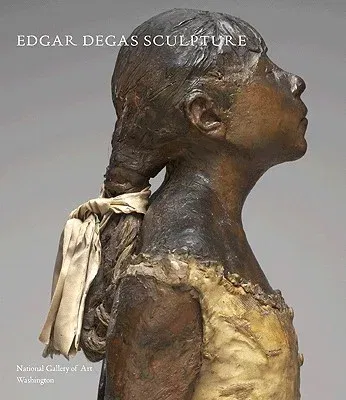As an artist, Edgar Degas (1834-1917) defies easy description. Allied
with the French impressionists through his commitment to portraying
modern life, he also took an independent course, preferring line over
color and the visible brushstroke, and working in a studio instead of
out-of-doors. He is perhaps best known as a painter, but his most widely
known work is a sculpture, Little Dancer Aged Fourteen. Executed in
wax, near life-sized, dressed in a ballerina's tutu, with real ballet
slippers and real hair, the sculpture caused a sensation when it was
exhibited in 1881. It is the only sculpture Degas ever showed publicly,
though more than one hundred--of dancers, horses, and bathers--were
found in his studio after he died, all dusty, some fallen apart. For
almost forty years after his death, these works were known only through
the bronzes his heirs had cast from the originals.Then, in 1955, the
waxes themselves appeared on the art market. Thanks to the discernment
and generosity of Paul Mellon, the majority are now preserved at the
National Gallery of Art, Washington, most on permanent display.
This groundbreaking volume honors this extraordinary gift by linking art
and science. It brings together the insights of a distinguished art
historian of nineteenth-century painting and sculpture and the
specialized knowledge of National Gallery conservators and scientists
who have published pioneering technical studies. Including essays on
Degas' life and work, his sculptural technique and materials, and the
story of the sculptures after his death, it features art-historical and
technical discussions of every work in the collection as well as
indispensable concordances and bibliography. The richly illustrated text
is intended for both art lover and specialist. Was Degas the sculptor
technically inept or unusually inventive? How do we understand his
sculpture in light of his paintings, prints, and photographs? These
questions and many others are explored with originality and depth,
adding immeasurably to our understanding of the artistic avant-garde in
the late nineteenth century and to our appreciation of this
controversial artist.

